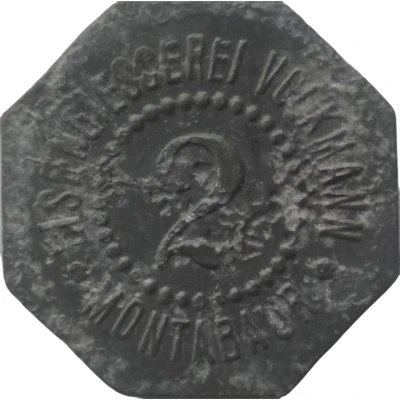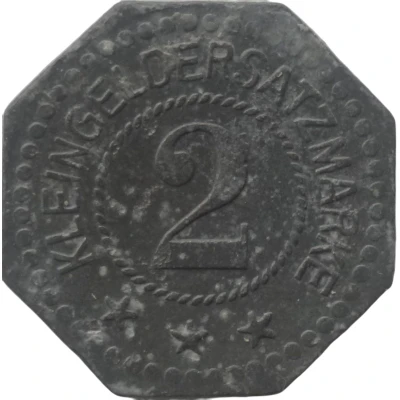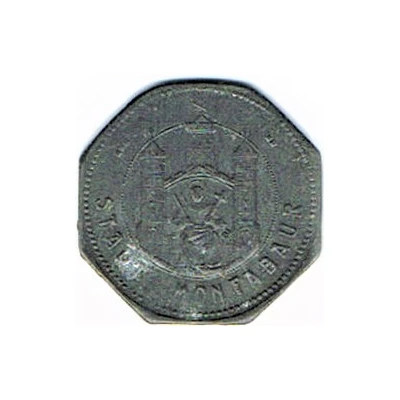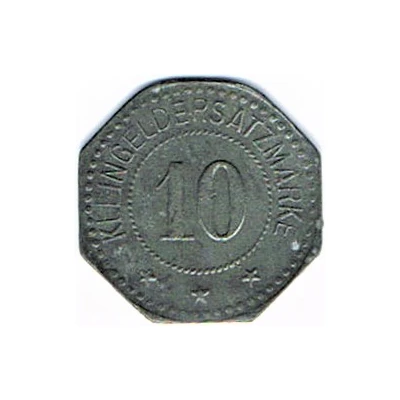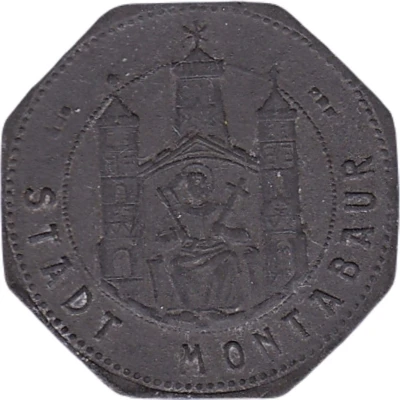
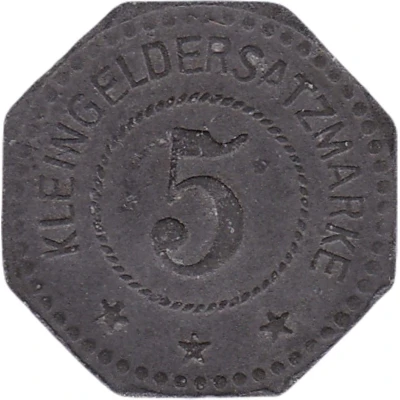

© gyoschak (CC BY-NC-SA)
5 Pfennigs - Montabaur ND
| Zinc | 1.6 g | 19.5 mm |
| Issuer | City of Montabaur (Prussian province of Hesse-Nassau) |
|---|---|
| Type | Standard circulation coin |
| Value | 5 Pfennigs (5 Pfennige) (0.05) |
| Currency | Mark (1914-1924) |
| Composition | Zinc |
| Weight | 1.6 g |
| Diameter | 19.5 mm |
| Thickness | 1.0 mm |
| Shape | Octagonal (8-sided) |
| Technique | Milled |
| Orientation | Medal alignment ↑↑ |
| Demonetized | Yes |
| Updated | 2024-10-04 |
| Numista | N#123241 |
|---|---|
| Rarity index | 82% |
Reverse
Pearl rim, legend surrounding rope circle with denomination centered
Script: Latin
Lettering:
KLEINGELDERSATZMARKE
5
★ ★ ★
Edge
Plain
Comment
Issuing body: [Stadt, Hessen-Nassau].Interesting fact
The 5 Pfennigs coin from Montabaur (Prussian province of Hesse-Nassau) made of Zinc weighing 1.6 g is interesting because it was produced during a time when zinc coins were not commonly used in circulation. Zinc coins were first introduced in Germany in the late 19th century, and they were initially used for small denomination coins like the 5 Pfennigs. The use of zinc in coin production was a significant innovation at the time, as it was a more affordable and durable material than the traditional copper and silver coins. The fact that this coin was produced in Montabaur, a small town in the Prussian province of Hesse-Nassau, adds to its uniqueness and historical significance.
